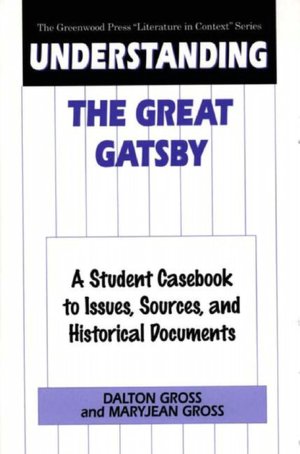.jpg) |
| *T.S. Eliot |
"The Hollow Men," written by Thomas Sterns Eliot and published in 1925, alludes to the American Dream and hopelessness of people. Shmoop, a website made for students, not only provides a text for the poem but a summary, analysis and introduction to multiple themes. It also raises excellent study questions for the poem. Published in the same year as The Great Gatsby, it serves as a good contrast to the tone of the novel and has a similar but unique message concerning hopes and dreams. It also touches on self-identity - clearly an issue for Jay Gatz. The Hollow Men is readable for high school students and while it can be seen as a depressing poem it highlights a key view of the American Dream in the 20s.
"The Hollow Men" will be read and used as a lesson in class and the study questions will be used to perpetuate discussion. Students will be able to discuss similarities and differences between the tone and message of the poem to The Great Gatsby.
Shmoop Editorial Team. (n.d.). The Hollow Men by T. S. Eliot. Retrieved October 26, 2012 from http://www.shmoop.com/hollow-men/poem-text.html
 |
| *The Jazz Poetry Anthology |
Edited By: Sascha Feinstein Yusef Komunyakaa
The Jazz Poetry Anthology is a collection of poems from the Jazz Age and on. It features many writers, such as William Carlos Williams, Carl Sandburg, and Langston Hughes. All of these poets allude to the American Dream at one point or another in some of their poems. And, because they are collected in an anthology, they can be retrieved and copied easily. While this particular anthology has been said to not be set up in the most practical way, it still can serve as a good resource for separate projects or drawing similarities between multiple poets.
I will most likely use three poems in a lesson, reading each and relating them to the style of Eliot's, "The Hollow Men," and to one another. Students will then be able to compare and contrast the viewpoints of the poets on the American Dream or on hopes and dreams as a more general subject.
Feinstein, S, & Komunyakaa, Y. (Eds.). (1991). The jazz poetry anthology. Bloomington: Indiana UP.
Video: Defining the American Dream
"Defining the American Dream" was a short video put out by The New York Times to discuss whether the idea of the American Dream is still alive and doing well today. Even though we are in a recession it shows that more believe they have reached the dream in 2009 then they did in 2005. This can say a lot about the times. For example, when times are harder individuals' dreams shift more to being able to live and be free or have a job rather than material wealth. This is important because it can also give us insight into the the Jazz Age. How has the American Dream shifted over time?
I think this video should be used toward the end of the American Dream/Great Gatsby unit to get students to question whether or not the American Dream is still alive and well. Also, they should analyze the demographics of people in the video - do middle/upper-middle class people have a different view of the American Dream than the lower economic classes?
Defining the American Dream [Video file]. May 7, 2009. Retrieved from http://www.newyorktimes.com/video/2009/0507/us/1194840031120/defining-the-american-dream.html
Article: The American Dream: A Biography
By Joe Meacham
This article, by Jow Meacham, discusses how the American Dream has evolved since the early 1900s through political and societal changes and ideals. It also briefly touches on the impact of economic class to how one sees the American Dream. The American Dream has always been something that made America and coming to the USA a great thing. Is it slipping away? Are we more concerned with the day-to-day living than trying to reach an ideal dream? Also, the American Dream was supposed to exist for everyone - does it only exist for a few? Is it only attainable for a few?
I would use this article as a homework assignment and ask students to discuss how it relates to the 1920s and Fitzgerald idea of the American Dream. Was the American Dream slipping away/out of reach now the same way Fitzgerald seems to have seen it in the 20s?
Meacham, J. (2012, June). The American Dream: A biography. Time. Retrieved From http://www.time.com/time/specials/packages/article/0,28804,2117662_2117682_2117680,00.html
.jpg) |
| *Is it, really? |







